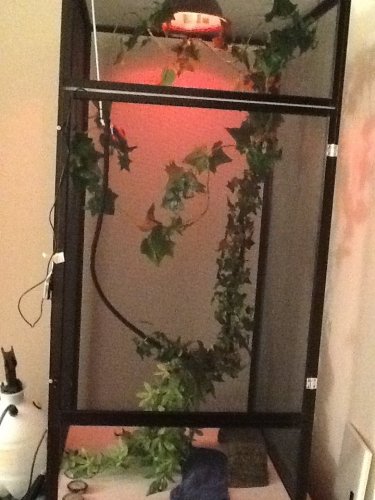I purchased and put together my 1st Cham cage. It is a 24x24x48. I also bought the drip tray to collect the extra water at the bottom of the cage. When I put the plastic sigh board material at the bottom the water just drips down and collects at the bottom. So I took it out and just had the drip tray. Then the freakin crickets started to escape! I left that for my cats to clean up and catch them. So I am really confused on how this cage works. Help please! I will be adding live plants as well but not for a couple of days. I was also bummed that mopo wood that I had would not fit in the cage. I was using that to keep up the humidity in the cage. Any suggestions would be great. This is what it looks like so far.
Attachments
Last edited:




